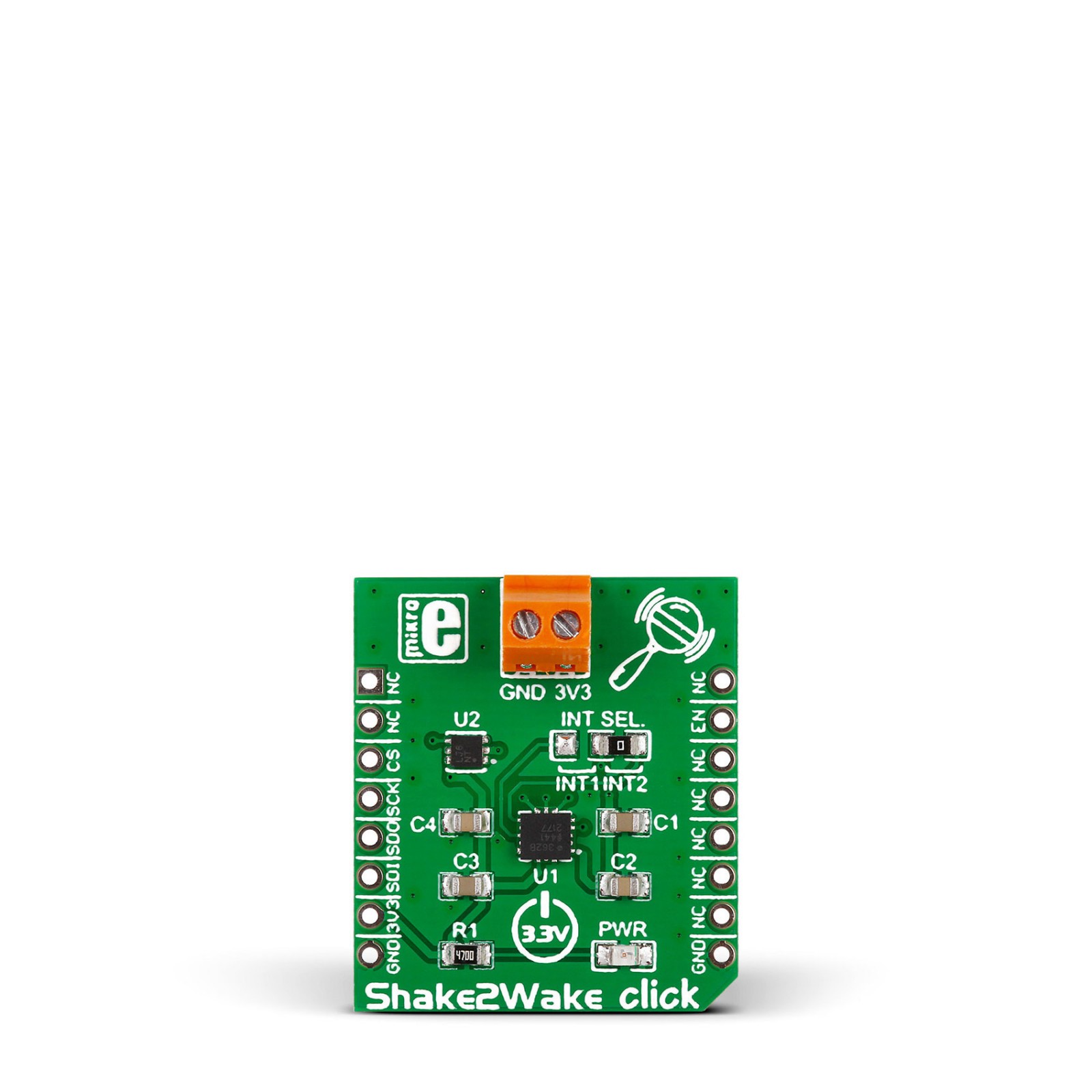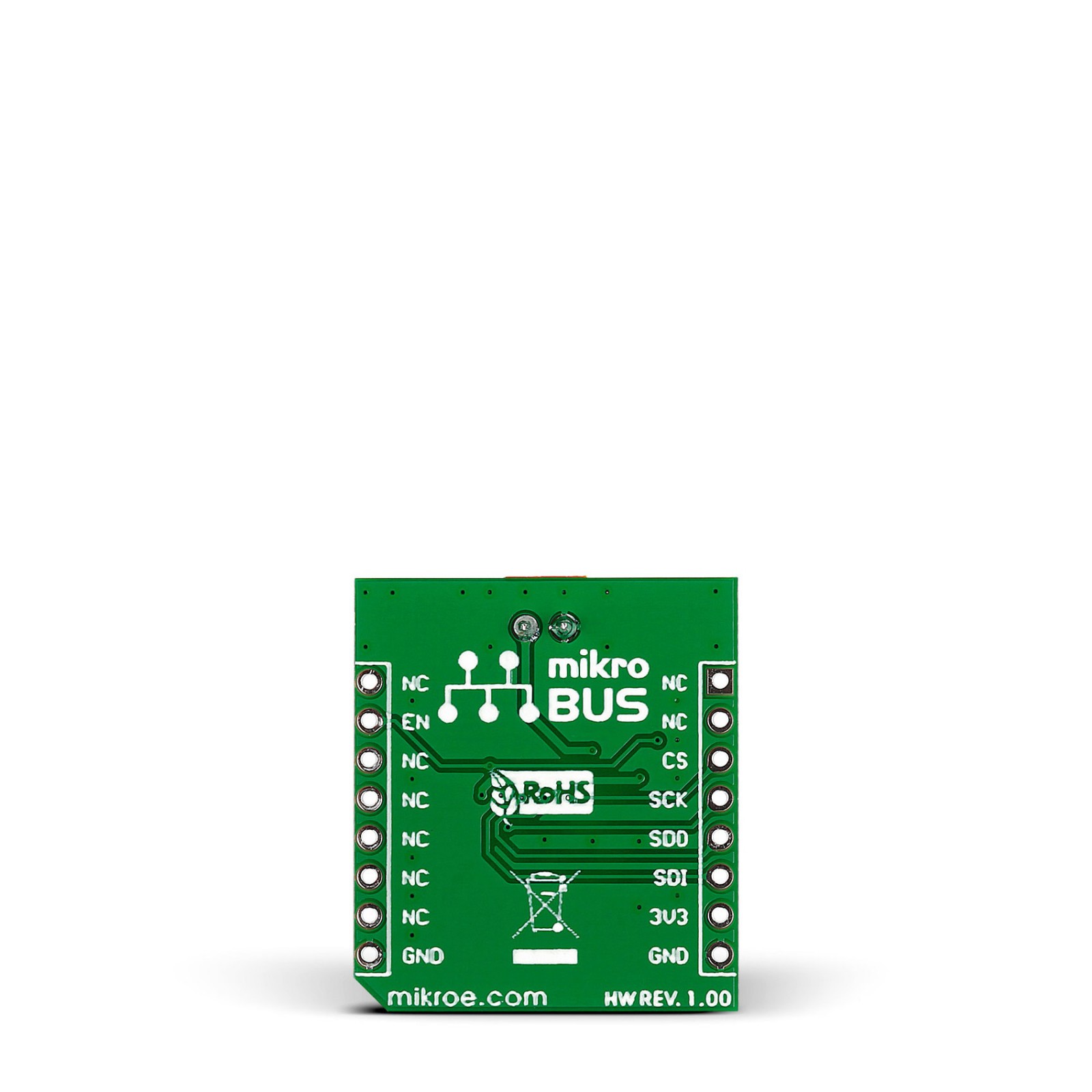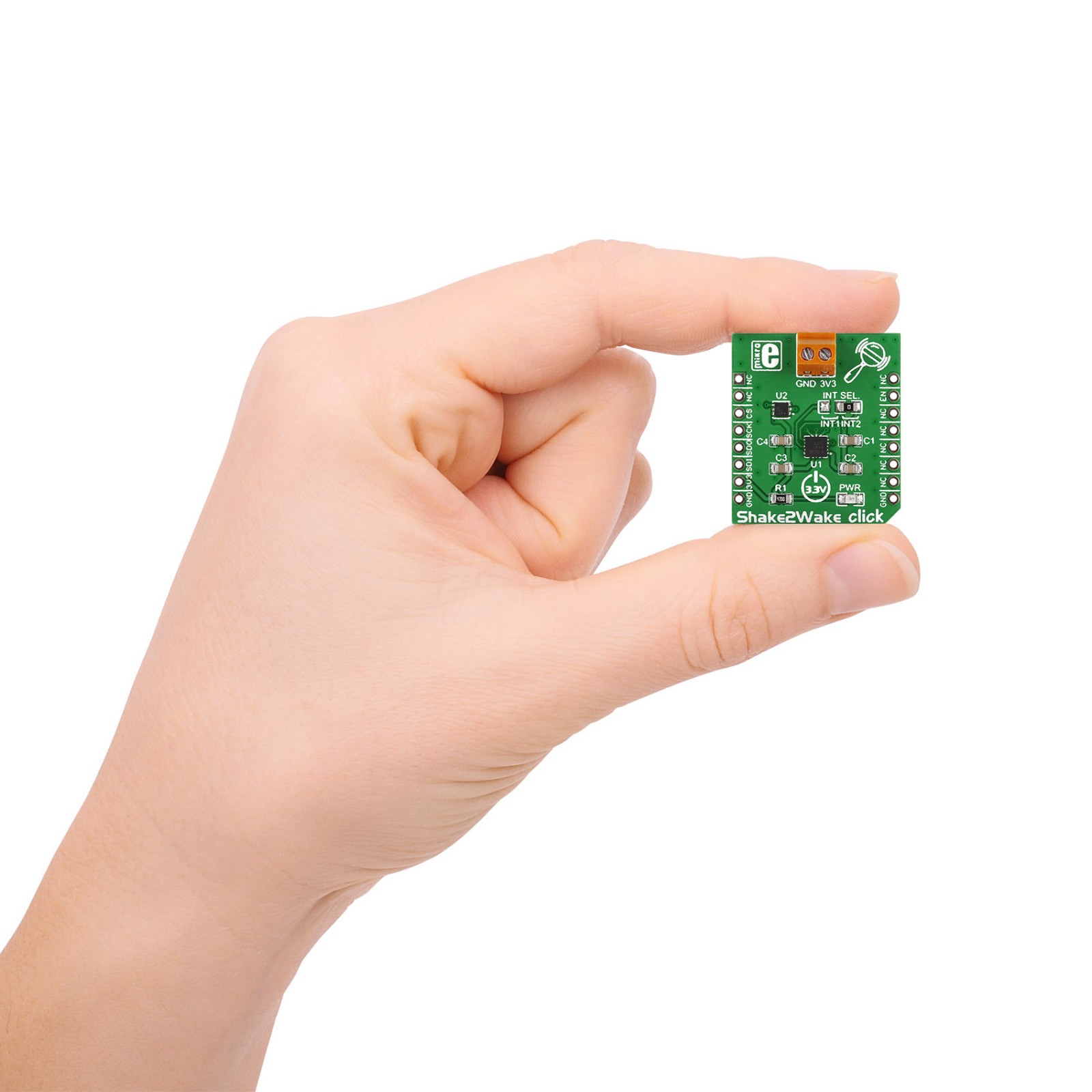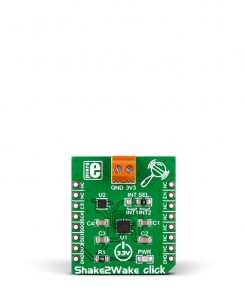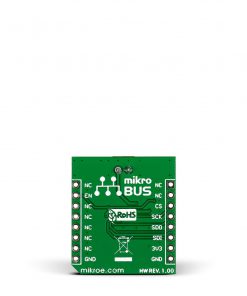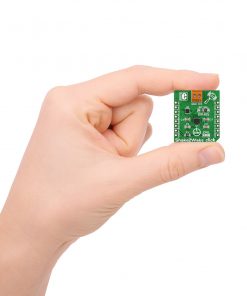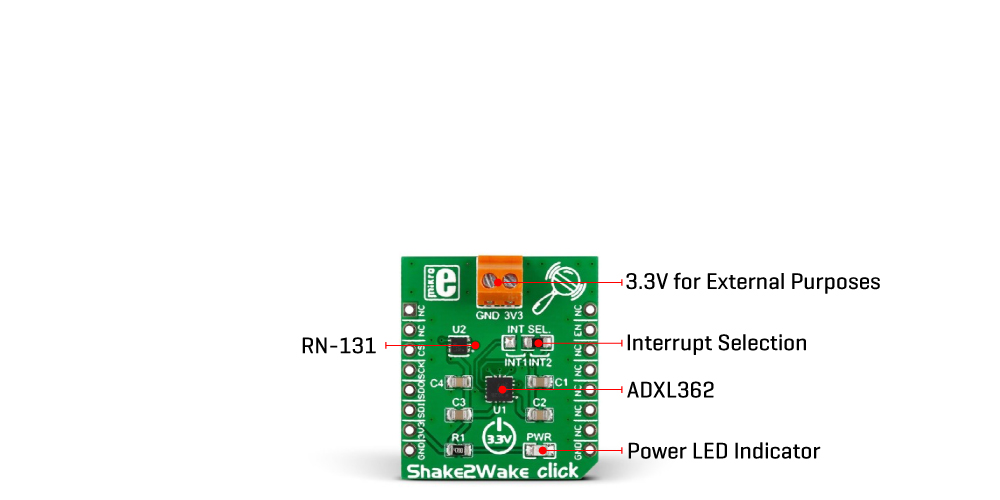Shake2Wake Click
R990.00 ex. VAT
Shake2Wake Click is a compact add-on board that provides a switch activated by a movement. This board features the ADXL362, a digital output 3-axis MEMS accelerometer, and the ADP195, a logic-controlled high-side power switch with reverse current blocking, both from Analog Devices. This Click board™ features several activity detection modes that can control an external device connected to an onboard ADP195 power switch through a screw terminal. The intensity and duration thresholds are configurable, along with the duration of inactivity. This Click board™ makes the perfect solution for designing accelerometer-based motion-activated devices, but also, it can be used as a regular accelerometer for continuous sensing.
Shake2Wake Click is supported by a mikroSDK compliant library, which includes functions that simplify software development. This Click board™ comes as a fully tested product, ready to be used on a system equipped with the mikroBUS™ socket.
Stock: Lead-time applicable.
| 5+ | R940.50 |
| 10+ | R891.00 |
| 15+ | R841.50 |
| 20+ | R809.82 |

